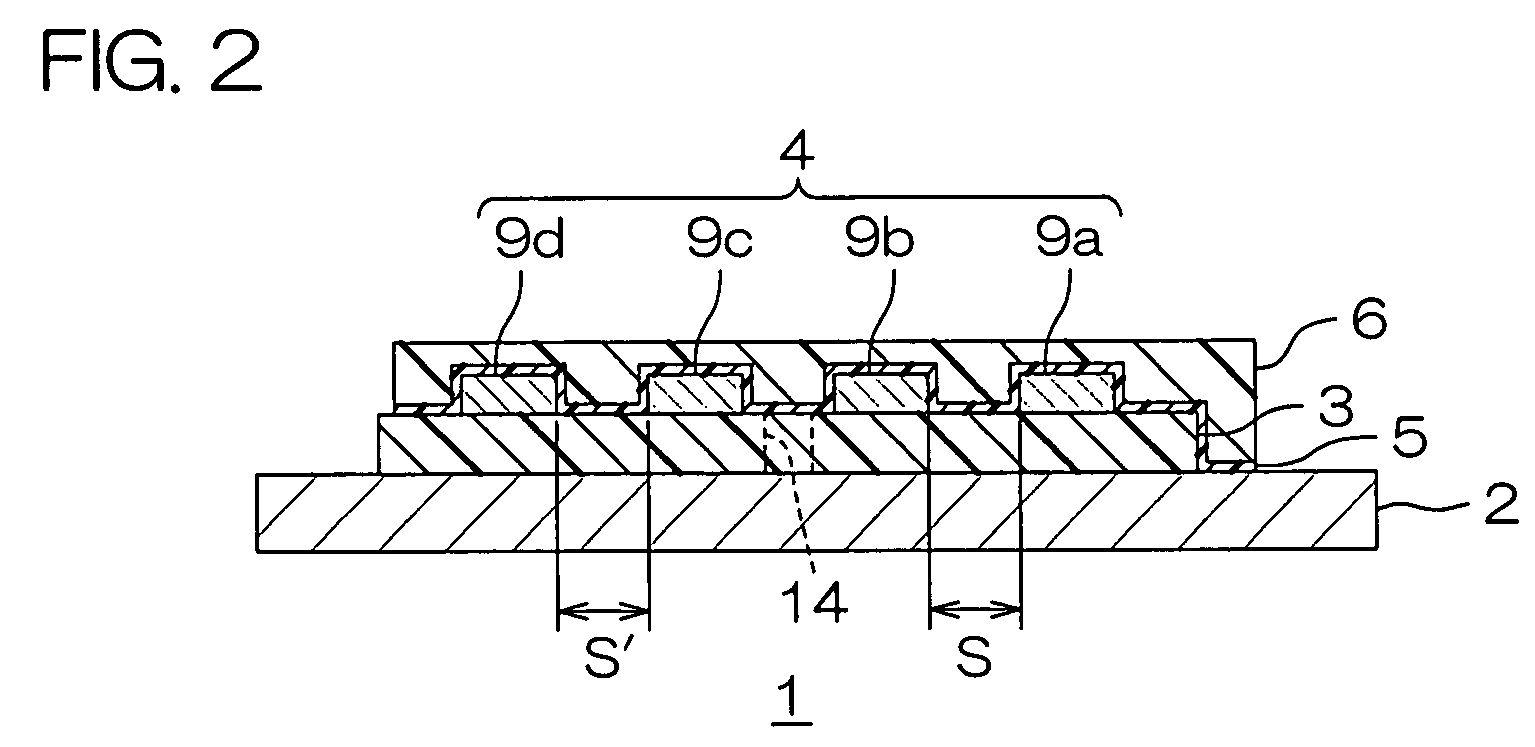Wired circuit board
a wired circuit board and wire technology, applied in the direction of printed circuit non-printed electric components association, integrated arm assembly, instruments, etc., can solve the problem that the electrostatic breakdown of the mounted electronic components cannot be reliably prevented, and achieve the effect of improving the connection reliably of the wire circuit board and preventing the electrostatic breakdown of the mounted electronic components
- Summary
- Abstract
- Description
- Claims
- Application Information
AI Technical Summary
Benefits of technology
Problems solved by technology
Method used
Image
Examples
example 1
[0182]A metal supporting board made of a stainless steel foil having a thickness of 20 μm was prepared (see FIG. 3(a)).
[0183]Then, a varnish of a photosensitive polyamic acid resin was uniformly coated on a surface of the metal supporting board with a spin coater. Subsequently, the coated varnish was heated at 90° C. for 15 minutes to form a base coating. Thereafter, the base coating was exposed to light at 700 mJ / cm2 via a photomask, heated at 190° C. for 10 minutes, developed with an alkaline developer, and cured at 385° C. under a reduced pressure of 1.33 Pa, thereby forming an insulating base layer made of photosensitive polyimide on the metal supporting board to corresponded to the portion where a conductive pattern was formed and the peripheral end portion of the metal supporting board was exposed (see FIG. 3(b)). The thickness of the insulating base layer was 10 μm.
[0184]Then, a conductive pattern made of a copper foil and having a thickness of 10 μm was formed by an additive...
example 2
[0202]A metal supporting board made of a stainless steel foil having a thickness of 20 μm was prepared (see FIG. 5(a)).
[0203]Then, a varnish of a photosensitive polyamic acid resin was uniformly coated on a surface of the metal supporting board with a spin coater. Subsequently, the coated varnish was heated at 90° C. for 15 minutes to form a base coating. Thereafter, the base coating was exposed to light at 700 mJ / cm2 via a photomask, heated at 190° C. for 10 minutes, developed with an alkaline developer, and cured at 385° C. under a reduced pressure of 1.33 Pa, thereby forming an insulating base layer made of photosensitive polyimide on the metal supporting board to corresponded to the portion where a conductive pattern was formed and a base opening was formed therein (see FIG. 5(b)). The thickness of the insulating base layer was 10 μm. The base opening was in a rectangular shape when viewed in plan view having a width of 80 μm and a length of 100 μm.
[0204]Then, a conductive patte...
PUM
 Login to View More
Login to View More Abstract
Description
Claims
Application Information
 Login to View More
Login to View More - R&D
- Intellectual Property
- Life Sciences
- Materials
- Tech Scout
- Unparalleled Data Quality
- Higher Quality Content
- 60% Fewer Hallucinations
Browse by: Latest US Patents, China's latest patents, Technical Efficacy Thesaurus, Application Domain, Technology Topic, Popular Technical Reports.
© 2025 PatSnap. All rights reserved.Legal|Privacy policy|Modern Slavery Act Transparency Statement|Sitemap|About US| Contact US: help@patsnap.com



